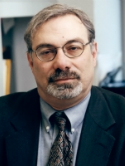| Abstract: |
Angiogenesis, the process of forming new blood vessels, is an essential part of reproduction, development, and wound repair. Under these conditions, angiogenesis is a process controlled according to the physiologic requirements of the organism. Many diseases, however, are driven by persistent unregulated angiogenesis as a pathophysiologic process. Pathologic angiogenesis plays an important role in the growth and metastasis of malignant tumors. Since 1983, several factors responsible for angiogenesis have been identified. It gradually has become clear that polysaccharides, such as heparin and heparan sulfate, play a key role through their affinity for certain polypeptide growth factors. These heparin-binding growth factors are capable of inducing angiogenesis. The family of heparin-binding growth factors, which had initially been purified by Gospodarovic et al. consist of structurally related polypeptides. Two members, heparan-binding growth factor 1 (HBGF1) and HBGF2, have been studied under many different names. Most commonly they are known as acidic and basic fibroblast growth factor (FGF) because of their influence on the proliferation of mesoderm- and neuroectoderm-derived cells. The interactions of the FGFs with heparin have important physiologic implications. Heparin increases the biologic activity of acidic FGF and protects acidic and basic FGF from degradation by heat, acid, and proteases. The binding of FGFs to heparan sulfate is essential for the binding of FGFs to their receptor on the cell surface. Because FGFs play such an important role in angiogenesis, their inactivation might become an important step towards cancer therapy by blocking angiogensis. The present study investigates the selective inactivation of FGFs by heparin-like polysaccharides. |



